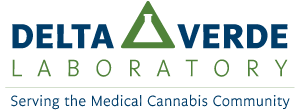Kentucky Green Grass Explains 3rd Party Verification
 |

|
If you’ve done any research at all on CBD oil, CBD vape liquids, or any CBD-based product for inflammation, anxiety, or depression relief, then you should have read something about third-party lab reports. But what are they, and how do you read them?
The Test
Independent testing by accredited laboratories with globally accepted analytical methods ensures the organic extract is intact from pesticides, heavy metals, or microbiological contaminants. Kentucky Green Grass has lab results from independent labs available on our product page as well as this page, tied to the batches of oil they were tested from. Each of our labels has a handwritten batch # that you can then use to look up the test results from each bottle you purchase. The image below is our current batch test results.

The Source
Harrodsburg, Kentucky
The quality of CBD oil is really based on its source; where was it grown, how was it grown, and what is the species of cannabis. Kentucky Green Grass is grown using 100% natural food farming methods that have no pesticides, in fact no chemicals ever and we have the tests results to prove it.
The soil, climate, plants growing on the farm next door, the flowers in the farmer’s garden, etc. are all reflected in the final essence of the plant, and there's no question that Harrodsburg, Kentucky has some of the most fertile farmland in the nation. But just to be sure, we perform soil tests, water tests and testing on the plants during their growth cycle to ensure the cleanest hemp plant for our CBD oils.
The main reason why hemp’s cultivation environment is so important is because the cannabis plant is a “hyperaccumulator,” meaning it easily absorbs contaminants from the soil while it grows. In fact, it’s used in bioremediation, a cost-effective plant-based approach to clean the environment of toxic heavy metals and organic pollutants.
Screenings Provided
When a lab test is performed, there are a number of possible screenings that can be run on a given sample. These screenings are used to determine what is in, and what is not in the end product. Below we dive into all the possible reports you'll run across.
Please note that across these screenings you will see 'ND' or 'LOQ' repeated frequently. This is the abbreviation for 'none detected'.
Cannabinoid Profile
Cannabinoids are the cannabis-derived molecules that provide the main health-benefiting properties of a CBD product. These compounds include well-known examples like CBD or THC and lesser known like CBG, CBC, or even the raw acid forms.

Terpene Profile
Terpenes are the aromatic oils found in cannabis that are present in full-spectrum CBD extracts. These compounds offer potential health benefits and additionally interact with the cannabinoids and other contents of an extract to provide the entourage effect. Terpenes are stripped during the process used to create a CBD isolate, but are sometimes added back in to create what the industry calls a 'terpsolate'.
A terpene screening displays the presence and concentration of terpenes in a given product, often measured as parts per million (PPM). These reports are generally straightforward to read:
Heavy Metal Screening
This screening verifies that a CBD product is free of heavy metal contamination. The report measures heavy metals like arsenic, cadmium, mercury and lead against allowable limits
Microbiology Screening
This screening verifies that a CBD product is free of microbes like yeast, molds, E-coli, and salmonella:
Mycotoxin Screening
This screening verifies that a sample is free of mycotoxins which are toxic substances produced by fungus.
Pesticide Screening
This report verifies that a sample is free of pesticides. This confirms that the hemp source was grown using pesticide-free methods in clean soil:
Solvent Residue Screening
Many extraction methods used to create CBD extracts require the use of chemical solvents. This report displays if any solvent residue remains after extraction:
KYGG Extraction Method Explanation
Supercritical (or subcritical) CO2 extraction
To obtain CBD-rich oil, you need to extract it from the cannabis plant. There are a handful of methods used, but typically this isn’t something customers know to ask about.
Not surprisingly, many companies use cheap methods that involve nasty toxic solvents such as propane, hexane, pentane, and butane, which are flammable hydrocarbon gases found in petroleum. Do you really want to put this in your body, especially if you are ill?
To preserve most of the plant’s trichromes – these are the cannabinoids, terpenes, and flavonoids – look for Supercritical (or subcritical) CO2 extraction. This method uses carbon dioxide under high pressure and extremely low temperatures to isolate, preserve, and maintain the purity of the medicinal oil. While this method is more expensive and involves complex equipment and expertise, it ensures quality.
The CBD oil obtained through supercritical extraction is a full-spectrum cannabinoid-rich product. This method also produces a cleaner taste, and mycotoxins cannot survive this process.
Not to mention it’s also eco-friendly and non-flammable, creating a safer laboratory and manufacturing environment, as well as better product control.



